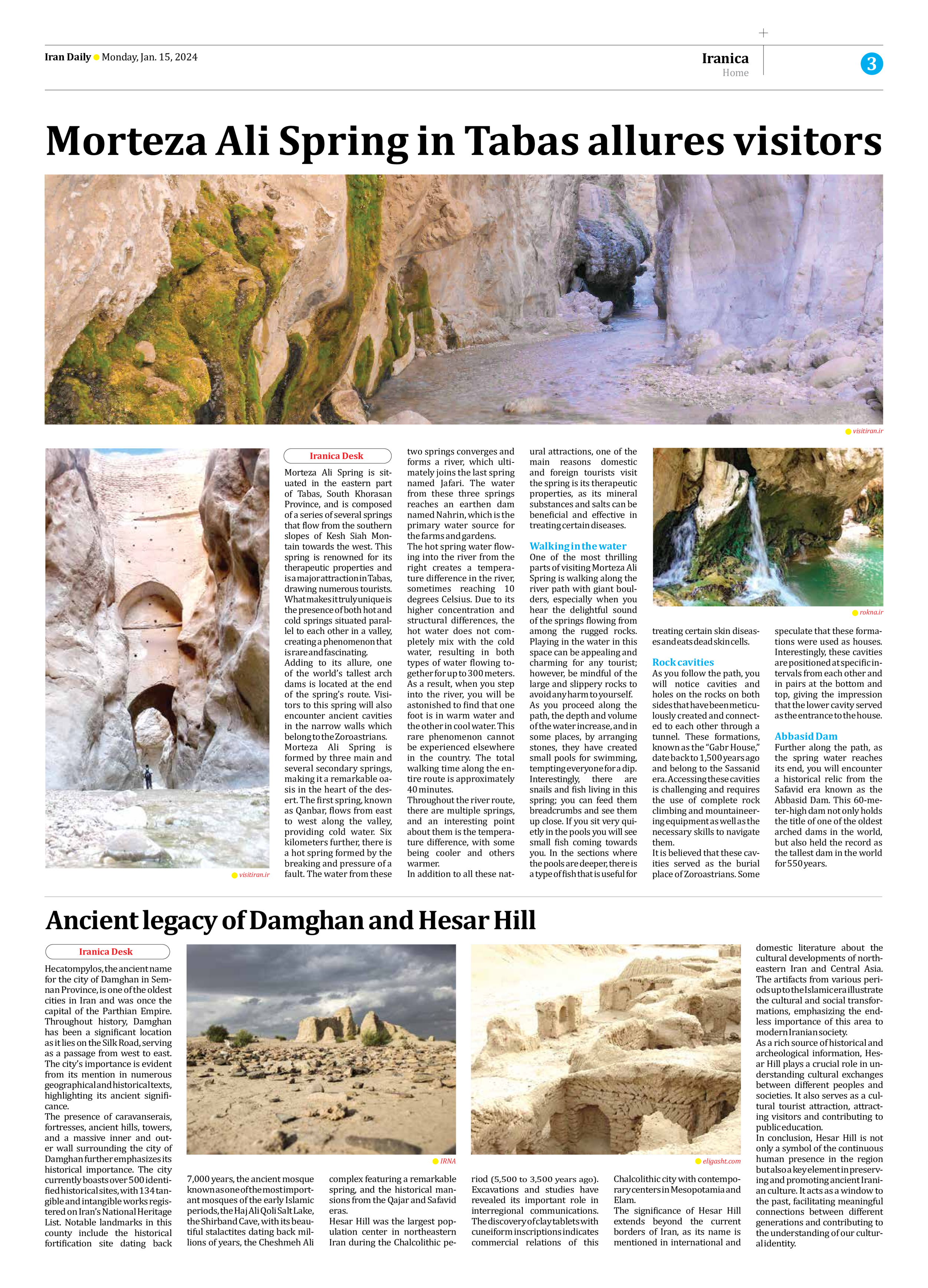
Ancient legacy of Damghan and Hesar Hill
Hecatompylos, the ancient name for the city of Damghan in Semnan Province, is one of the oldest cities in Iran and was once the capital of the Parthian Empire. Throughout history, Damghan has been a significant location as it lies on the Silk Road, serving as a passage from west to east. The city’s importance is evident from its mention in numerous geographical and historical texts, highlighting its ancient significance.
The presence of caravanserais, fortresses, ancient hills, towers, and a massive inner and outer wall surrounding the city of Damghan further emphasizes its historical importance. The city currently boasts over 500 identified historical sites, with 134 tangible and intangible works registered on Iran’s National Heritage List. Notable landmarks in this county include the historical fortification site dating back 7,000 years, the ancient mosque known as one of the most important mosques of the early Islamic periods, the Haj Ali Qoli Salt Lake, the Shirband Cave, with its beautiful stalactites dating back millions of years, the Cheshmeh Ali complex featuring a remarkable spring, and the historical mansions from the Qajar and Safavid eras.
Hesar Hill was the largest population center in northeastern Iran during the Chalcolithic period (5,500 to 3,500 years ago). Excavations and studies have revealed its important role in interregional communications. The discovery of clay tablets with cuneiform inscriptions indicates commercial relations of this Chalcolithic city with contemporary centers in Mesopotamia and Elam.
The significance of Hesar Hill extends beyond the current borders of Iran, as its name is mentioned in international and domestic literature about the cultural developments of northeastern Iran and Central Asia. The artifacts from various periods up to the Islamic era illustrate the cultural and social transformations, emphasizing the endless importance of this area to modern Iranian society.
As a rich source of historical and archeological information, Hesar Hill plays a crucial role in understanding cultural exchanges between different peoples and societies. It also serves as a cultural tourist attraction, attracting visitors and contributing to public education.
In conclusion, Hesar Hill is not only a symbol of the continuous human presence in the region but also a key element in preserving and promoting ancient Iranian culture. It acts as a window to the past, facilitating meaningful connections between different generations and contributing to the understanding of our cultural identity.







